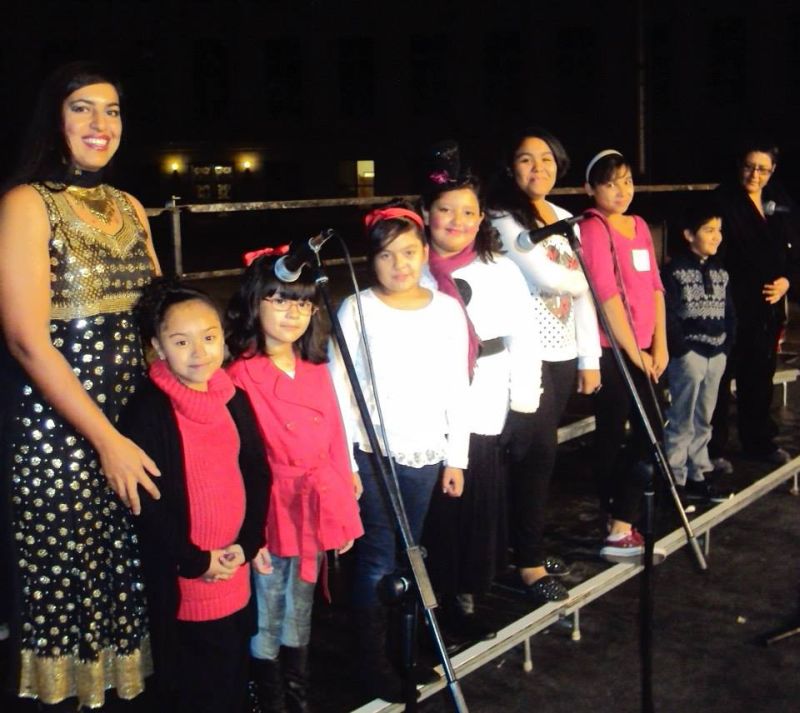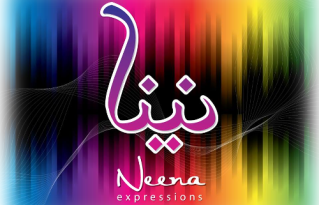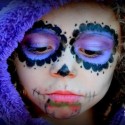Bring Performance Art into the Classroom!
The Connecting Link to Increase Literacy
Background:
I’ve always found it important to incorporate physical exercise and movement into every part of the day. Since childhood, I’ve been involved with dance or fitness. I went to traditional school where the expectation was to sit for most of the day. I found myself constantly daydreaming or thinking about other things. It was difficult to stay interested in school. Despite this fact I maintained high grades. Most of what I learned was based on memorization of facts that later became meaningless. When I became a Montessori teacher at Escuela Tlatelolco, I was given an opportunity to create my own artistic educational program within a Montessori setting. Performance and singing has now become a synonymous part of the school day. My intent is to create an enthusiastic and creative classroom setting. Following are concepts and tools to use in the classroom to create higher literacy through creative movement and play.
Learning Styles
With the various types of learning styles present in the classroom, it’s important to take into account multiple intelligences. Renowned Professor, Howard Gardner, pioneered eight distinct styles of learning. Below is a description of these styles. I added some ideas to incorporate into student work plans or teacher lesson plans.
Gardner
In the article “Multiple Intelligences in the Classroom,” Jennifer Nolen summarizes Gardner’s eight intelligences. Everyone has different types of learning styles and by incorporating each style in the classroom, we enhance student learning overall. I will describe the eight intelligences below.
Howard Gardner’s Theory of Multiple Intelligences
- Linguistic – Students with this learning style tend to think in words, have highly developed auditory skills, reading and writing, manipulate language, good memorizers. Ideal occupations are teaching journalism, writing, translation, These students have high level of grammar and vocabulary skills to explain, persuade, entertain, teach and analyze.
Include in work plans: Oral presentations, creative writing, performance, reports on topics of high student interest.
- Music – These students think in sound, pitch, rhythm timber, motion. They tend to sing, read music, read lyrics, critique songs and perform. The article suggests that this intelligence is minimized in our society although it may be the most important. These students tend to capture and convey feelings, and can connect with all the other intelligences smoothly.
Include in work plans: song writing, choir, lyrical study, performance.
- Mathematical abstraction – These students have logical reasoning, are gifted in calculating and memorizing schedules, Great with finances and correlating abstract patterns.
Include in work plans: mathematical computation, memorization and operations.
- Spatial – These students can manipulate images, recognize interesting angles, widely used by hunters and travelers. They have a great sense of accuracy. Ideal occupations are navigator, architect, designer, chess player, painter and sculptor,
Include in work plan: teach using pictures or photographs, concrete learning, collage, and story boarding.
- Kinesthetic – These students are body expressive, have fine motor skills, and excellent control of gross motor skills. They easily manipulate objects, have delicate movements, and precise control. Ideal occupations are surgeons, sculptors, carpenters, plumbers, athletes, dancers, mimes. These students can pattern sequences, are intentionally driven, can capture a motion and express it through different mediums, act gracefully, athletic, powerful, fast and accurate.
Include in work plan: sing, dance, choreography, use manipulatives, keep busy with hands on activities.
- Interpersonal – understand others, perceive, discriminate, understands feelings about intelligences
Include in work plan: Peace Rose Diplomat, journaling, writing.
- Intra-personal – individual knowing oneself and one’s inner workings, high achieving, interpersonal teaching. Ideal role models are Gandhi, Martin Luther King, Rosa Parks. Ideal occupations are salesman, parent, therapist, counselors. Intrapersonal intelligence is imaginative, original, patient, disciplined motivated and self-respectful.
Include in work plan: long-term projects, stages, procedure, interpersonal, teamwork, operations
- Environmental – These students love symbols, respect, balance, and appreciate nature. Ideal occupations are scientists, biologists, herbalists. Some role models are George Washington Carver, Rachel Carson and Charles Darwin.
Include in work plan: classification, botany, animal kingdom, timeline of life, outdoor learning, observing nature, labeling specimens from nature, sorting, caring for pets, field trips.
When and Why I Started Performance Art with Students
When I started working at Escuela Tlatelolco in 2002, I saw a need for teaching cultural songs. I work in a bilingual multicultural school. It is also a social justice school. I teach students cultural songs from Mexico, Indigenous and Native songs, and also International music. I grew up speaking and understanding several languages including Urdu, Punjabi, Hindi, and later French and Spanish. I found that combining music and movement into the daily class structure creates students who are productive in school and life. They become energetic, calm, and alert.
After we practice for a performance students demonstrate a greater degree of focus in other academic areas with renewed vigor and an awakened, oxygenated brain! Students demonstrate more cohesion with each other during the school day. A couple years ago I worked with a professional musician/singer. She mentioned that my classroom reminded her of the show FAME. That used to be my favorite TV show! Here’s a testimonial from her:
Unity in Unison at Denver Lights the Lights, with Audrey Santos

Testimonial from Audrey Santos
It has been a true pleasure to work with Mrs. Neena in her classroom throughout my time working at Escuela Tlatelolco. I was first introduced to Mrs. Neena through our involvement in the youth coro “Unity in Unison.” Mrs. Neena is the coro director and I provided her with assistance and vocal support for the students at Escuela. The students in coro range from first grade through high school. What I love most about her approach with the students is that she looks at music through a holistic approach. Music isn’t just about singing and reciting lyrics, but teaching students about the mechanics of the body through Yoga instruction, and assisting them in understanding the essence behind the spirit of the music. She exposes her students to music from around the world, and also engages them in learning about their own personal histories through the songs she teaches. Neena has led the choir in representing Escuela not just within the school, but throughout the Denver Metro community.
Neena Massey has a true gift for being able to bring in her own personal talents and gifts into all aspects of her life; from her personal performance art to the teaching that she does within the classroom. Neena reflects those personal aspects of herself in her all her work. There were often times that I aided Neena within her classroom, and was amazed at how she used music to redirect the students and create an engaged and enthusiastic classroom. She also brought in elements of movement including elements of traditional and contemporary dance. I served as one of the collaborating instructors who piloted a music thematic course during the six week summer sessions. We taught the students about body mechanics and science through our anatomy and physiology portion of the class, about mindfulness and movement through the Yoga portion of the class, about the mechanics of instruments through our hands on building musical instruments portion of the class, and also about music theory and actual performance practice. My best memories while working at Escuela Tlatelolco include my involvement with Mrs. Neena in the summer music thematic and Unity in Unison performances.
Sincerely,
Audrey Santos
Student interviews
After our last performance for Dies y Seis de Septiembre (September 16th), I sent a survey out to new and experienced student performers with a variety of questions, including rating the performance itself, envisioning a performance at it’s best, inquiring how performance, art and P.E. helps students concentrate throughout the day. I asked students about their favorite part of school. The student population polled were between the ages of 6-12. There were 35 surveys completed.
Overall Data Interpretation
Most students liked the performance and the ones who gave specific feedback were students who had prior experience with choir. Most students had trouble envisioning a future performance. These percentages reflect the specific question: which part of school helps you focus during the school day? Results were: P.E. 35%, Art 19%, Music 18%, Lunch/Snack 15%, Recess 13%. Although this survey was geared towards performance art and movement, several students noted food and water as the biggest contributing factor of focus during the school day.
I have worked with several of the same students for many years and have had the opportunity to watch them grow as artists and as amazing human beings. Here are some pictures of student performances.
Unity in Unison at Indian Wedding Festival 2014

Unity in Unison at Indian Wedding Festival 2015

Día de los Muertos
Every year we have a Día de los Muertos celebration. It is the biggest celebration citywide in Denver. Escuela Tlatelolco is the community center for this event. It starts with a candlelight procession from La Raza Park all the way back to the school on the main streets of Denver. The procession is led with a blessing dance. Children are next with flowers for the spirits, and the rest of the participants follow. At the school each class has previously set up altáres, complete with flowers, candles and pictures to honor relatives and loved ones that passed away. Another blessing and dance is done by Grupo Tlaloc, a group of professional Aztec Dancers. This is followed by several performances by local dance groups and followed by a performance from Unity in Unison choir students. In addition, we invite the entire community for a feast, hosted by staff and parents of Escuela Tlatelolco.
Smudge Ceremony at La Raza Park
Candlelight Procession
Unity in Unison at Dia de los Muertos Celebration

Teaching Reading through Lyrical Study
In the choir class, I teach reading lyrics first. Many students who struggle with conventional reading of literature and text learn to read lyrics quickly. They’re able to memorize songs. This phenomenon is logical. When we hear a jingle or a tune on the radio or on TV it’s very easy to remember the tune. Learning songs and lyrics are one of the best forms of teaching reading. The article “Teaching Reading through Lyrical Study…” describing what I have seen with my own practice over the years. This article suggests teaching lyrics before teaching notes. It emphasizes the importance of circling or going over words that are unfamiliar with students. Most classrooms teach reading through literature and text. Most language involves rhythm, word, song, lyrics and tunes. Students who struggle to read conventional text or words have an easier time reading lyrics. They actively participate in choir.
In the article “Let’s Bring Back the Magic of Song for Teaching Reading,” by Becky Sake, she suggests that singing is a gateway for the development of phonemic awareness. She goes on to say that the rhyming nature of most sing-song lyrics provide excellent text, re-teaching word families in a creative format. One main point of this article is that repetition increases reading fluency, students learn prosodic nature, brevity, melody and rhythm. Lyrics demonstrate tracking words. This article suggests that a years’ worth of teaching song lyrics can improve the DRA scores of students by at least one year growth or even more. I agree with this and have DRA data to support that theory.
How does Performance Art Teach Literacy in the Classroom?
Performance art teaches literacy in the classroom through many modalities. There is spoken word, poetry, lyrics, singing, choreography, movement, mime and gesture. There are many forms of activity going on within any given moment. Teaching performance art incorporates many of Howard Gardner’s intelligences at once.
In the article entitled “Rehearsal Break: Helping Singers Learn, Why Teach Words First,” by Stephen Rafe, he suggests that teaching words to formally trained musicians helps them become familiar with the words before the music. Once I teach students lyrics, we work on emotion, interpretation and pitch. Mr. Rafe suggests using successive approximation, which is a process that starts with what the child knows and works beyond that. He goes on to say that “Learning words from lyrics-only sheets (with no music notes) becomes, then, an obvious first step—even for auditory learners (p. 79). Clearly, learning words and then emotions they express before learning notes is efficient, effective, logical and scientifically supported. Choral singers who have tried this approach find that their learning rate and their retention rate (memorization) increase significantly. Mr. Rafe recommends putting catch phrases together and placing the lyrics strategically in the middle of the page to enhance the process in which the eye cues the brain to read easiest. I normally teach lyrics this way as well.
Performance art addresses the need for movement, the need to speak out, the need for camaraderie and the need for teamwork.
Storytelling
Another aspect of teaching performance art is through story telling. A couple years ago, Ron Green, a professional storyteller/educator, worked at Escuela Tlatelolco. He taught rich and diverse storytelling within my classroom. This increased students’ ability to concentrate for longer periods of time. Students who were not able to read suddenly became writers before reading. Students became prolific story tellers themselves with the ability to generate high interest stories of their own.
This year we’ve incorporated storytelling as a form of creative writing. As part of the morning work period, students may write a story or brainstorm ideas with friends. Before lunch students clean up a bit early and incorporate acting with student characters in the classroom. Students help each other explain the vision of the stories. Everybody forms a circle. The circle is held sacred. Audience members respect the performers’ center space. The only one who gives directions is the director. Students are learning spatial skills, direction, production, writing, reading and acting.
Building this informal creative time is important. Literacy in the classroom takes a huge leap. Students write through storyboarding and pictures. Students may think out loud or ask someone else to write as they describe the direction of the story. Students listen carefully and create teamwork together. Second quarter we are expanding the original impressions into concrete writing skills. Students will use original drafts from first quarter to create plots, characterization, and dialogue and may use actual puppets. This purpose is to help evolve the students’ writing skills.
In the article written by Shanetia Clark, “Guiding the Noticing: Using a Dramatic Performance Experience to Promote Tellability in Narrative Writing,” she says, “Dramatic performances illuminate on-task student talk and physical movement. This type of talk and movement allows for students to create new meanings, new texts, and ultimately a stronger literacy community by transferring the vivid, active sensory details. The use of role play enables students to physically and socially construct their stories and notice which areas needed more details. By considering dramatic performance as a strategy for inquiry and/or for drafting, students become better speakers and language users (p. 65).
Summary
My intention is to demonstrate how performance art, including lyrical study, storytelling, dance, and creative movement enhances literacy. It’s essential to incorporate as many learning styles as possible, to increase student engagement in the classroom. In the time I have spent incorporating performance in the classroom, I have noticed students become more focused and alert in other subjects. Students have clearly demonstrated that their focus improves with more movement and activity during the school day. Reading lyrics is a superb way to enhance literacy, and enforces high level reading skills and comprehension. This includes musicality, interpretation, prosodic nature, brevity, rhythm and melodic structures. Storytelling is the umbrella that spans the different modalities described above. As I continue my work of incorporating performance art into the Montessori classroom, I hope to share my insights with other teachers and educators.
Annotated Bibliography
- Clark, Shanetia. “Guiding the Noticing: Using a Dramatic Performance Experience to Promote Tellability in Narrative Writing.” The Clearing House, vol. 85, 2012, pp. 65–69.
This article reinforces the idea that dramatic performance promotes intentional student discussion and physical movement. This type of dialogue allows students to synthesis original thought, create text and build a vibrant literacy community. Acting and role play helps students construct stories and add more detail where needed. Dramatic performance is a strategy for inquiry and collaboration, and creates better speakers and language users.
- Iwasaki, Becky. “Let’s Bring Back the Magic of Song for Teaching Reading.” reading.org, The Reading Teacher, Oct. 2013.
This article suggests that learning singing is a gateway for the development of phonemic awareness. Rhyming nature of most sing-song lyrics provide excellent text, and reteaches word families in a creative format. One main point of this article is that repetition increases reading fluency, teach prosodic nature, brevity, melody and rhythm. Reading lyrics provides easy access to word tracking. This article suggests that a years’ worth of teaching song lyrics can improve the DRA scores of students by at least one year growth or even more.
- Nolen, Jennifer L. “Multiple Intelligences in the Classroom.” Education, vol. 124, no. 1, 2003, pp. 115–119.
This article does a great job summarizing and describing the multiple intelligences as demonstrated by Howard Gartner, Harvard professor and psychologist. The article briefly describe each intelligence, gives examples of personality traits inherit within the intelligence, and suggests ideas for the classroom. This article is a great introduction to the readings of Howard Gardner.
- Rafe, Stephen. “Helping Singers Learn: Why Teach Words First.” Choral Journal, vol. 55, no. 9, pp. 79–82.
This article suggests that teaching words first to formally trained musicians helps them become familiar with the words before the music. He suggests using successive approximation, which is a process that starts with what the child knows and works beyond that. Choral singers report that this approach helps their learning and retention rate to increase significantly. Mr. Rafe goes further to suggest putting catch phrases together and placing the lyrics strategically in the middle of the page to enhance the way eye cues the brain to read easiest.


